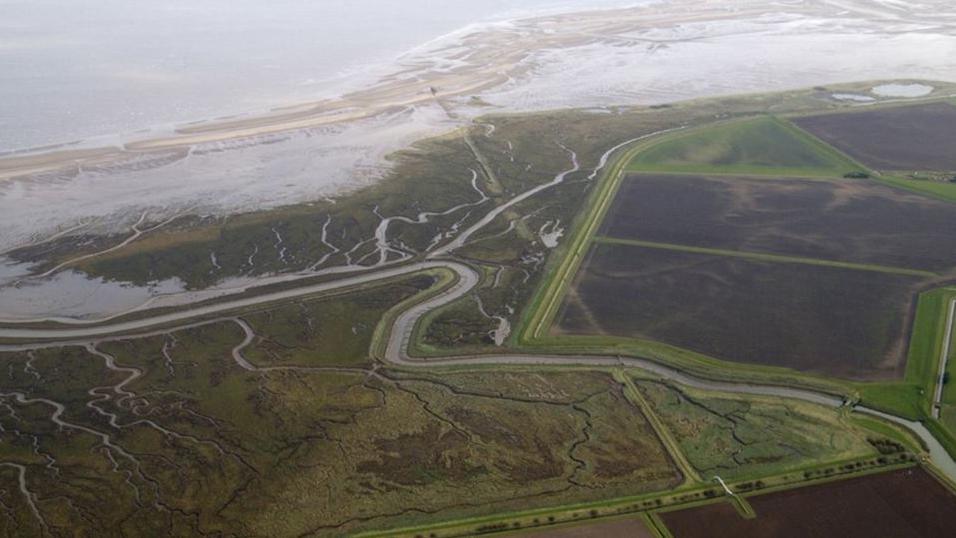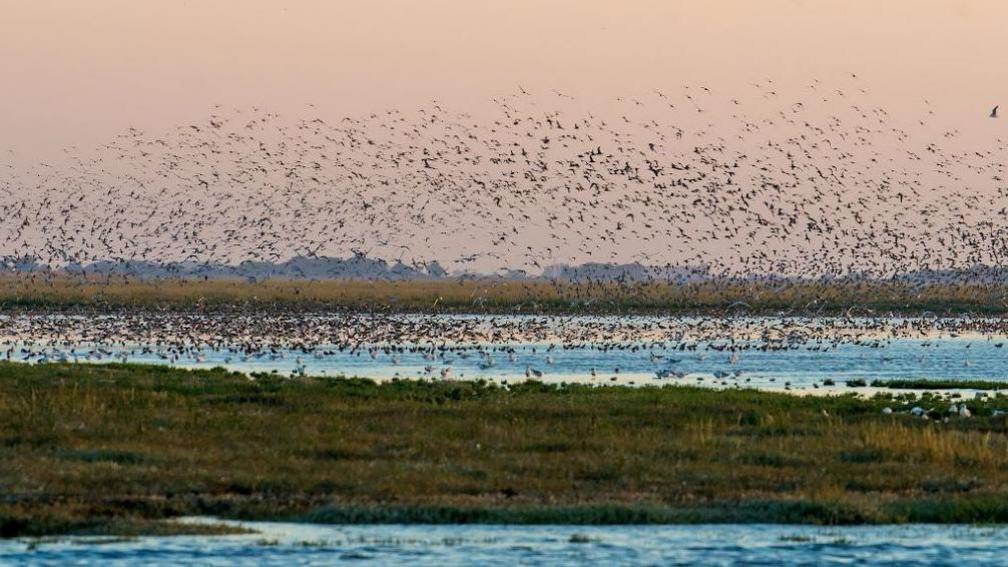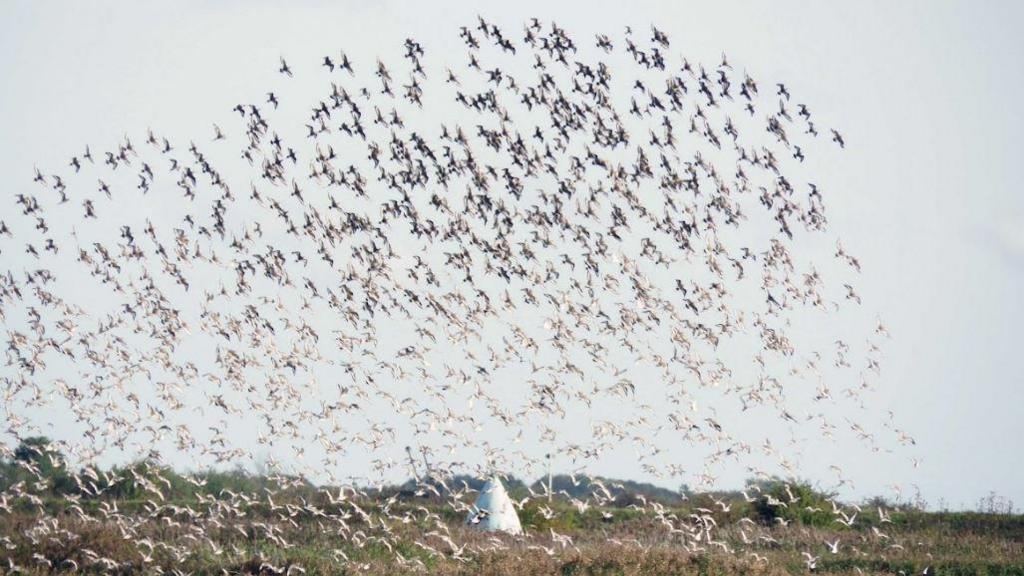Humber wetlands bid for World Natural Heritage Site recognition

Tetney Marshes in Lincolnshire is one of the natural habitats which could be recognised as having special natural heritage status
At a glance
Wetlands down England's east coast, including in the Humber region, have been included in the RSPB's bid for recognition of their special status
A recent report said wetlands on the east coast played an essential role for migratory birds
If the bid is successful, they would be added to the UK’s Tentative List of Natural World Heritage sites
They could subsequently be added to a list of globally recognised sites of importance, including the Great Barrier Reef and Mount Kilimanjaro
- Published
Wetlands in the Humber region could be added to a list of sites of global importance which includes the Great Barrier Reef and Mount Kilimanjaro.
The RSPB has applied to the government asking for wetlands all down England's east coast to be added to the UK's Tentative List of Natural World Heritage sites.
A recent report said the east coast of England was of "outstanding universal value" because it supported globally important bird populations.
Richard Barnard, Yorkshire and Humber area manager for the RSPB, said it was exciting to think the area was "up there with some of the most important places for nature globally".
A wide range of species used the Humber as an "essential home and as refuge during huge migration journeys", Mr Barnard said.

The Wash estuary is a vital habitat for migrating birds such as waders, the RSPB said
A recent report by marine and coastal habitat consultants ABPmer showed one million birds relied on England's east coast each winter, the RSPB said.
They used the "unique shores and inland marshes to shelter from harsh conditions in Scandinavia, Canada, Greenland and Siberia", it added.
The report stated the east coast wetlands supported over 155 different bird species, with 29 species using the area in "internationally important numbers", meaning they were dependent on the wetlands for their survival.
James Robinson, director of conservation at the Wildfowl & Wetlands Trust, said: "The people of the East Riding of Yorkshire and Lincolnshire have always known how fantastic the Humber's wetlands are.
"For them to be recognised on a world stage would help us all speak up for these habitats and the importance of protecting and celebrating them."

If added to the list, Frampton Marsh Nature Reserve could sit alongside the Galapagos Islands as an internationally recognised natural site
The proposed site would cover 420,079 acres (170,000 hectares) of coastline from the Humber estuary to the Thames.
There are currently only two Natural World Heritage sites in the UK: the Dorset and East Devon Coast and the Giant's Causeway and Causeway Coast.
A decision on whether the east coast wetlands would be added to the UK's Tentative List of World Natural Heritage sites was expected by early 2023, the RSPB said.
This list forms the basis of the UK’s World Heritage site nominations to Unesco, the United Nations Educational, Scientific and Cultural Organisation.
If accepted, the east coast could join a list which also includes iconic sites such as the Great Barrier Reef, the Galapagos Islands and Mount Kilimanjaro.
Follow BBC Yorkshire on Facebook,, external Twitter,, external and Instagram, externalSend your story ideas to yorkslincs.news@bbc.co.uk, external